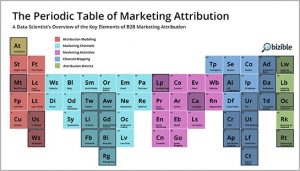Well it’s been an interesting year, if nothing else. Divisions may have formed, for better or for worse, but if there’s one thing that unites us now it’s change. 2017 will be a year that things shift, in a lot of ways, and you can either face that with confidence and clarity, or you can bury your head and hope it all passes you by. To be fair, the latter is probably not a bad plan for some situations, but in the maturing world of marketing, a choice to be less agile is a choice to be less able.
What’s remarkable about this digital world we inhabit is the ability of smaller enterprises, start-ups and solo individuals to seize great influence seemingly from nowhere. And key to this is their adaptability. Maybe it’s an age thing – the younger generation are typically more open to trying new stuff, new techniques and technology like VR, or new social channels – but the point is they put themselves out there and give things a go. So how does one coax out that start-up mentality from a large corporation?
Everybody needs to get on board with change
Adapt and improve
For larger, long-established companies, staying competitive in this regard presents a challenge, but for a large company to have start-up traits begins with an openness to quickly adapt and improve. And that doesn’t just go for the top brass – everybody needs to get on board with change. Indeed, according to the Towers Watson Change and Communication ROI survey, 68% of senior managers say they understand the reasons for organisation change; that goes down to 53% for middle managers and then just 40% of front-line supervisors beyond that. Something is not trickling down in quite the way it should.
Perhaps ‘tis fate, therefore, that we’ve released our latest free guide, and it’s all about change communications. Part of the reason we decided to have such a guide is because we firmly believe that any company can be as agile as the smallest, most forward-looking or innovative start-up, and rapid adaptability will be the driving force behind the great businesses of 2017, big or small.
The challenge of course with a big company is that there are more people that need to be informed and engaged about what’s coming; start-ups simply have fewer people to convince. Big corporate change on the other hand needs to be communicated in ways that reassure and engage the workforce, that advise them on why this is happening, what benefit it will hold or the end-goal it will achieve, and how employees should respond and move forward.
Thing is, larger companies are great at spotting new trends in their industries – they’re long-established experts, after all – but can get bogged down in a committee mentality while smaller companies have the ability to quickly get on making improvements.
Be malleable and adaptable
For instance, a trend we’ve witnessed over the course of 2016 in the marketing world is that large corporate infrastructures can be too rigid and disparate. Customers want a cohesive, singular journey through their experience of a brand or company and at the start of the year, according to Gartner, nearly nine out of ten of companies were planning to compete on customer experience. But that can’t work when marketing, sales, HR and IT all present a slightly different version of the marketing narrative, and in so doing fail to provide a consistent strategy that spans all departments.
To achieve the kind of cohesion customers want – to make progressive strides in your marketing strategy – change is needed; a little rejigging of corporate infrastructure might be necessary. The Content Marketing Institute has said that more and more companies will need to employ a C-level executive to oversee an organisation’s marketing narrative and ensure consistency across the board. And that inevitably will require that person to communicate those changes to the rest of the company and the affected departments, delivered in creative ways that inspire progress and a can-do attitude.
Always follow the data
As our guide will outline, for change communications to be effective, a consistent and constant message must trickle down from all departments and all managers at every level of seniority. Anything less causes confusion, potentially even resentment, which will inevitably stymie any hope to improve.
Being adaptable and open to change doesn’t mean you have to sacrifice your consistency as a brand, as my colleague Tor rightly pointed out last week, but we are in a data-driven age. You have to be ready to respond to what your data tells you. UX and customer experiences rely firmly on a modern, data-led strategy that’s ready to provide something innovative – and that approach could be markedly different from anything you’ve done before as a brand.
If the data tells you something’s not working, you look at the data and see how to improve. Indeed, in the case of content marketing, anything not led by data is simply throwing out content for content’s sake, adding to the internet fog. Small companies have the benefit of switching up quickly, but that certainly doesn’t preclude anyone else from doing so.
You look at the data and see how to improve
Agility is not assuming what customers want; it’s being constantly informed on what they need and being ready to adapt where necessary. And to do that effectively you need a workforce that’s ready to embrace a bit of reinvention at the drop of a hat.
The key to a large company adopting start-up tendencies is to be malleable and adaptable. Analyse the data that supports changing your strategy and be prepared to communicate that to your workforce in a way that inspires progress. 2017 will be the year of change, and we’re ready for it.
Business & Finance Articles on Business 2 Community
(22)






